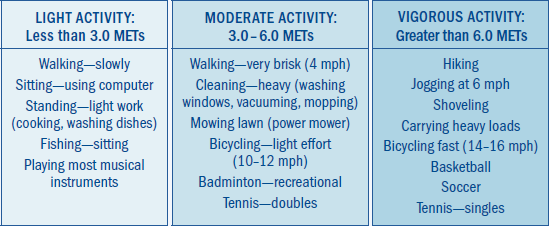As an electrophysiologist in Boulder, Colorado I get a lot of questions about how much exercise is recommended for patients with arrhythmias. Exercise is good for you but is more better? Anecdotal evidence has suggested that endurance exercise increases the risk of atrial fibrillation.
A recent study published in European Heart Journal addressed this issue. 402406 individuals (52.5% female) were followed over 2.8 million person-hours of follow up.
Gist of article:
- Exercise > 500 MET-min/week is associated with a reduced risk of AF
- Exercise >2500 MET-min/week is associated with a higher risk of AFIB in men


Walking 4 miles per hour on flat surface is about 4 METS. Here is a graphic illustrating common exercises:
